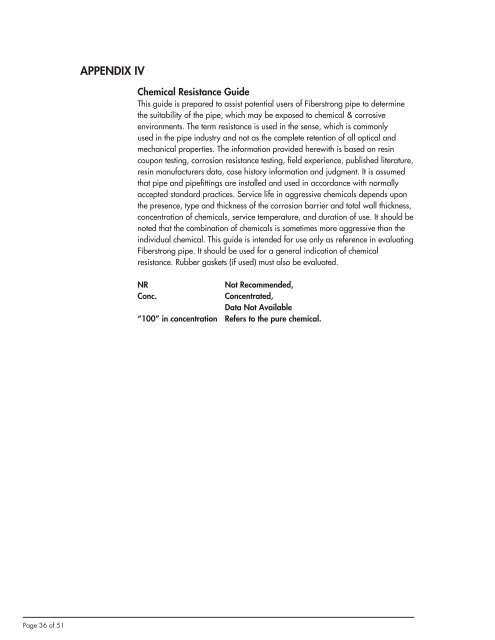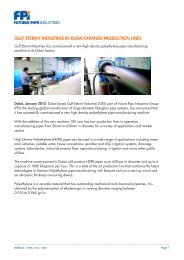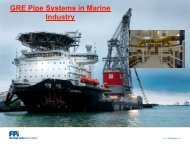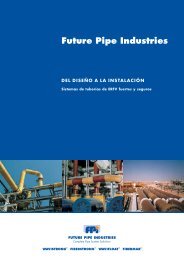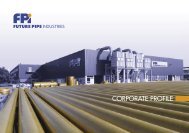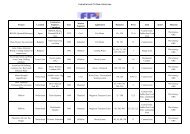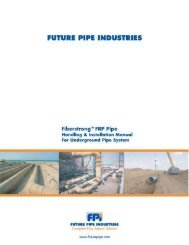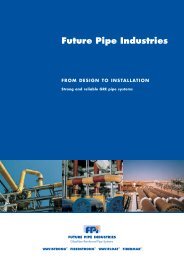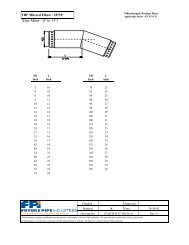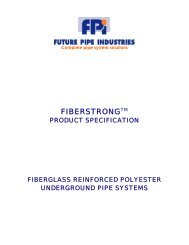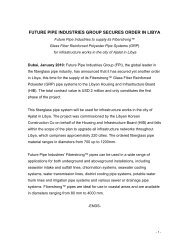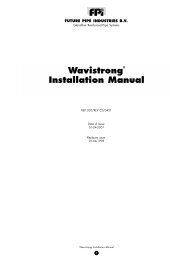www.futurepipe.com/usa
www.futurepipe.com/usa
www.futurepipe.com/usa
You also want an ePaper? Increase the reach of your titles
YUMPU automatically turns print PDFs into web optimized ePapers that Google loves.
Page 36 of 51<br />
APPENDIX IV<br />
Chemical Resistance Guide<br />
This guide is prepared to assist potential users of Fiberstrong pipe to determine<br />
the suitability of the pipe, which may be exposed to chemical & corrosive<br />
environments. The term resistance is used in the sense, which is <strong>com</strong>monly<br />
used in the pipe industry and not as the <strong>com</strong>plete retention of all optical and<br />
mechanical properties. The information provided herewith is based on resin<br />
coupon testing, corrosion resistance testing, field experience, published literature,<br />
resin manufacturers data, case history information and judgment. It is assumed<br />
that pipe and pipefittings are installed and used in accordance with normally<br />
accepted standard practices. Service life in aggressive chemicals depends upon<br />
the presence, type and thickness of the corrosion barrier and total wall thickness,<br />
concentration of chemicals, service temperature, and duration of use. It should be<br />
noted that the <strong>com</strong>bination of chemicals is sometimes more aggressive than the<br />
individual chemical. This guide is intended for use only as reference in evaluating<br />
Fiberstrong pipe. It should be used for a general indication of chemical<br />
resistance. Rubber gaskets (if used) must also be evaluated.<br />
NR Not Re<strong>com</strong>mended,<br />
Conc. Concentrated,<br />
Data Not Available<br />
“100” in concentration Refers to the pure chemical.


